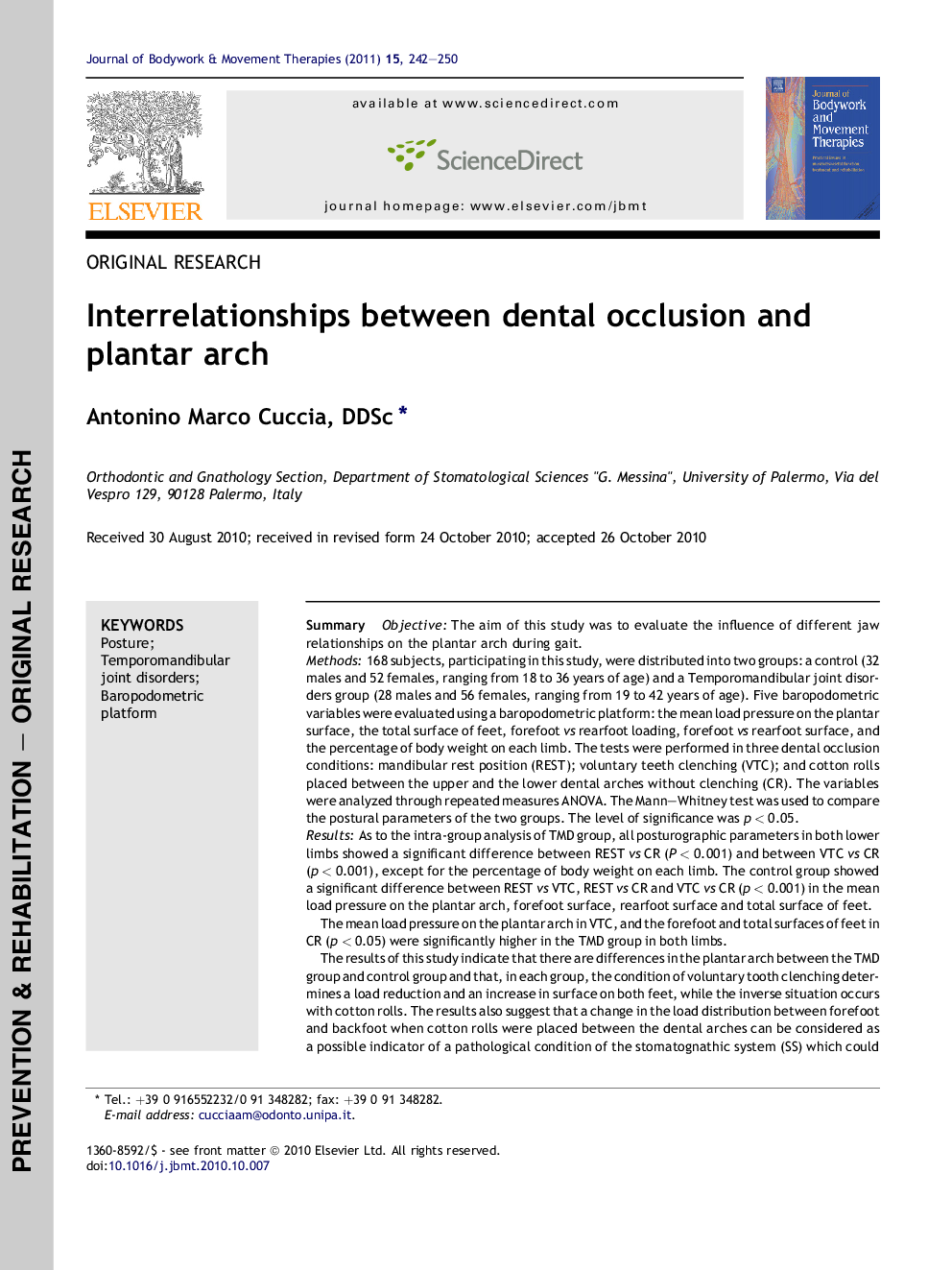| کد مقاله | کد نشریه | سال انتشار | مقاله انگلیسی | نسخه تمام متن |
|---|---|---|---|---|
| 2619799 | 1135520 | 2011 | 9 صفحه PDF | دانلود رایگان |

SummaryObjectiveThe aim of this study was to evaluate the influence of different jaw relationships on the plantar arch during gait.Methods168 subjects, participating in this study, were distributed into two groups: a control (32 males and 52 females, ranging from 18 to 36 years of age) and a Temporomandibular joint disorders group (28 males and 56 females, ranging from 19 to 42 years of age). Five baropodometric variables were evaluated using a baropodometric platform: the mean load pressure on the plantar surface, the total surface of feet, forefoot vs rearfoot loading, forefoot vs rearfoot surface, and the percentage of body weight on each limb. The tests were performed in three dental occlusion conditions: mandibular rest position (REST); voluntary teeth clenching (VTC); and cotton rolls placed between the upper and the lower dental arches without clenching (CR). The variables were analyzed through repeated measures ANOVA. The Mann–Whitney test was used to compare the postural parameters of the two groups. The level of significance was p < 0.05.ResultsAs to the intra-group analysis of TMD group, all posturographic parameters in both lower limbs showed a significant difference between REST vs CR (P < 0.001) and between VTC vs CR (p < 0.001), except for the percentage of body weight on each limb. The control group showed a significant difference between REST vs VTC, REST vs CR and VTC vs CR (p < 0.001) in the mean load pressure on the plantar arch, forefoot surface, rearfoot surface and total surface of feet.The mean load pressure on the plantar arch in VTC, and the forefoot and total surfaces of feet in CR (p < 0.05) were significantly higher in the TMD group in both limbs.The results of this study indicate that there are differences in the plantar arch between the TMD group and control group and that, in each group, the condition of voluntary tooth clenching determines a load reduction and an increase in surface on both feet, while the inverse situation occurs with cotton rolls. The results also suggest that a change in the load distribution between forefoot and backfoot when cotton rolls were placed between the dental arches can be considered as a possible indicator of a pathological condition of the stomatognathic system (SS) which could influence posture. Therefore the use of posture monitoring systems during the treatment of stomatognathic system is justified.
Journal: Journal of Bodywork and Movement Therapies - Volume 15, Issue 2, April 2011, Pages 242–250